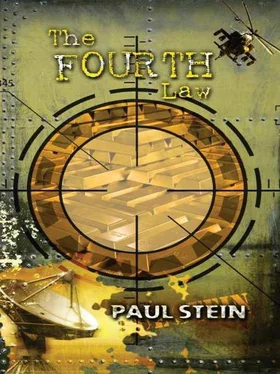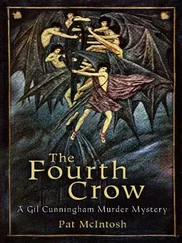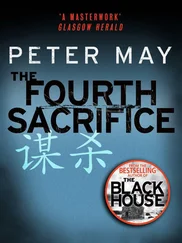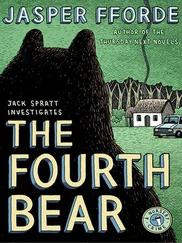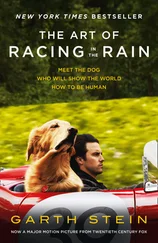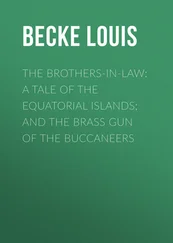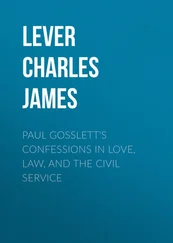Paul Stein - The Fourth Law
Здесь есть возможность читать онлайн «Paul Stein - The Fourth Law» весь текст электронной книги совершенно бесплатно (целиком полную версию без сокращений). В некоторых случаях можно слушать аудио, скачать через торрент в формате fb2 и присутствует краткое содержание. Жанр: Боевая фантастика, на английском языке. Описание произведения, (предисловие) а так же отзывы посетителей доступны на портале библиотеки ЛибКат.
- Название:The Fourth Law
- Автор:
- Жанр:
- Год:неизвестен
- ISBN:нет данных
- Рейтинг книги:3 / 5. Голосов: 1
-
Избранное:Добавить в избранное
- Отзывы:
-
Ваша оценка:
- 60
- 1
- 2
- 3
- 4
- 5
The Fourth Law: краткое содержание, описание и аннотация
Предлагаем к чтению аннотацию, описание, краткое содержание или предисловие (зависит от того, что написал сам автор книги «The Fourth Law»). Если вы не нашли необходимую информацию о книге — напишите в комментариях, мы постараемся отыскать её.
The Fourth Law — читать онлайн бесплатно полную книгу (весь текст) целиком
Ниже представлен текст книги, разбитый по страницам. Система сохранения места последней прочитанной страницы, позволяет с удобством читать онлайн бесплатно книгу «The Fourth Law», без необходимости каждый раз заново искать на чём Вы остановились. Поставьте закладку, и сможете в любой момент перейти на страницу, на которой закончили чтение.
Интервал:
Закладка:
Kilmer tried like hell to maintain his composure. “It was a command decision,” Kilmer replied steadily, refusing to be unnerved. “My only choice was to save the lab rat. Yer dodgy recon should o’ clued us there might be someone cruisin’ the halls that late. Killin’ ‘im would’ve implicated Ryan Marshall in a murder. Is that what ya wanted? Ya weren’t there, Mr. Holloway.”
Kilmer fully understood that this was Alastair Holloway’s modus operandi: a gifted individual always in control and without peer, invariably the smartest one in the room, bitingly caustic, belittling anyone who made even the smallest of errors. His behavior was irritating under the best of circumstances, but he tolerated it for the money Holloway provided for his singular services. But when he felt the sting of his whip, there was only so much Kilmer would stomach.
“None of this is what I wanted, you arrogant ass,” Holloway replied. “Make sure you get my data to Mills tomorrow… without any further complications,” he shouted.
The phone went dead in Kilmer’s ear.
AUGUST FOURTH
FOUR
Stanford University
01:30 HOURS
The Quantum Building was swarming with activity. Crimson flashing lights rhythmically flooded the structure’s exterior. Response vehicles from every emergency service agency-from sheriff to coroner-had all responded to the 911 call from the chief security guard. Palo Alto police surrounded Quantum and completed a thorough search of each quarter of the building. The Santa Clara Sheriff’s SWAT unit coordinated a search along the streets leading from the murder scene; several more SWAT members took positions atop adjacent buildings. The crackle of sporadic radio transmissions permeated the surrounding area from the multiple jurisdictions responding to the incident.
The county EMS coordinating team was activated and quickly established a command center on the first floor. A single radio frequency was assigned to the multi-agency coordinating team so that each member could communicate directly with the incident command center. The MAC streamlined emergency response protocols that would be in conflict were it not for prior training amongst the members. The years of training paid handsome dividends at an incident like Quantum, and Captain Clay Hawkley swelled with pride at how well the MAC was functioning.
Captain Hawkley established the incident command shortly after his arrival on scene. He was well versed in the role, having been the chief architect who created the MAC in Santa Clara County. The IC was kept insulated from interference, but in direct contact with every ranking officer in the unit. In this way, information coming from the field was filtered, processed, and analyzed, making command decisions responsive to only the most current information.
Captain Hawkley awaited breaking information from his field commanders: Lieutenant Morris from division headquarters was investigating the crime scene; Sergeant Cristobel from SWAT was covering the perimeter of the building; Lieutenant Pomeroy from homicide was interviewing the surviving guard. Captain Hawkley patiently anticipated reports from these three seasoned professionals.
On the third floor, Lieutenant David Morris was busily taking notes from his first impression of the crime scene. The county coroner pronounced the victim dead at the scene and took possession of the remains. The scene of the crime was a gruesome affair, but not unlike most homicides that involved a shooting. The victim lay on his back in the middle of the corridor, immediately in front of lab 313. There was a large pool of blood surrounding the victim, which had discharged from a massive head wound. Looking down at the corpse, Lieutenant Morris recognized the amazed look on his face; the expression and open eyes conveyed surprise. He marveled at the surfeit of forensic evidence available from the initial examination of a murder victim. A trained eye could usually detect the circumstances immediately preceding the crime-whether an argument or struggle precipitated the murder, or as in this case, it was completely unexpected.
A small hole directly in the center of the victim’s forehead proved that the shooter was an expert marksman. Even though this was a close-range shooting, it was rare to see a murder committed in passion where a bullet hole was so perfectly centered. Morris concluded that the shooter was a professional, and while he had been clearly caught off-guard, he made an instant decision that killing the intruder was the most expedient course of action. Cold, calculating, and remorseless. All trademarks of a trained professional assassin, Morris thought.
The hole in the victim’s forehead confirmed that a small caliber weapon was used. But the massive exit wound suggested a hollow point bullet, meant to shred and kill, rather than wound or maim. Brain matter was splattered against the back of the wall in a diameter of about fifteen inches, confirming that the back of the victim’s skull had literally exploded against the impact of the hollow point. Lieutenant Morris also recognized a small hole in the wall. It was at the center of the crimson splash of blood and brains from the victim’s head. This small hole was unquestionably made by the slug that was fired through Frank Santos’s cranium. Retrieving the slug would provide the caliber of the weapon used, though it probably wouldn’t be of much use beyond that. If, as he suspected, the murderer was a professional, the gun used was most likely untraceable. Still, there was a good bit of information to be gathered from this crime scene.
“Got anything, Sergeant?” Morris asked as he entered Dr. Levassuer’s lab.
“Not really. It looks like an unplanned entry, from what we can determine,” responded Sergeant Chino. “Stuff’s been shoved around to make it look like they were searching for something, but Dr. Levassuer claims that nothing’s missing. We got his statement.”
“Anything interesting?”
Sergeant Chino shrugged, looking at his notes. “You be the judge,” he replied, peering over the rim of his reading glasses. Chino had a reputation for short, terse statements. “Levassuer says he was walking down the stairs and was overpowered by two men dressed in black and wearing hoods. Both men were of medium height and build. He claims they approached him from below, but before he realized what was happening, they knocked him out. He came to sometime later, but distinctly remembers hearing a helicopter above the building. His statement corroborates what we’ve discovered on the roof.”
“Okay, good work, Sergeant,” Morris replied. “Who’s on the roof?”
“Sergeant Cristobel and his SWAT guys are up there. They found discarded climbing gear, rope, and two parachutes. Apparently the perps parachuted onto the roof, set an anchor, and rappelled into the fifth-floor office occupied by a Dr. Jarrod Conrad. Sergeant Reynolds is up there now,” Chino summarized so Morris could assess which location to check on next. “Let me know if I can help out on the fifth floor, Lieutenant,” he volunteered, hoping to get involved in the more exciting part of the crime investigation.
“No…I want this area to have your full attention, Sergeant,” Morris instructed. He was well aware of Chino’s ambitious nature. “I want everything documented before the coroner moves the victim; make sure nothing’s overlooked. After the victim is moved and the scene is cleared, you can join us on the fifth floor. Understood?” he said politely. But he had not meant it to be anything other than an order.
“Affirmative,” Sergeant Chino replied, not enthused with his orders but accepting them nonetheless. “I’ll make sure this scene is cleared by the book.”
As Lieutenant Morris made his way to the fifth floor, he called Hawkley to give his preliminary findings from the homicide scene. He reported that the murder was committed by at least two professionals while attempting to obscure their primary crime: the burglary on the fifth floor. Hawkley was intrigued and asked for an immediate report on the fifth-floor break-in as soon as it was available.
Читать дальшеИнтервал:
Закладка:
Похожие книги на «The Fourth Law»
Представляем Вашему вниманию похожие книги на «The Fourth Law» списком для выбора. Мы отобрали схожую по названию и смыслу литературу в надежде предоставить читателям больше вариантов отыскать новые, интересные, ещё непрочитанные произведения.
Обсуждение, отзывы о книге «The Fourth Law» и просто собственные мнения читателей. Оставьте ваши комментарии, напишите, что Вы думаете о произведении, его смысле или главных героях. Укажите что конкретно понравилось, а что нет, и почему Вы так считаете.
